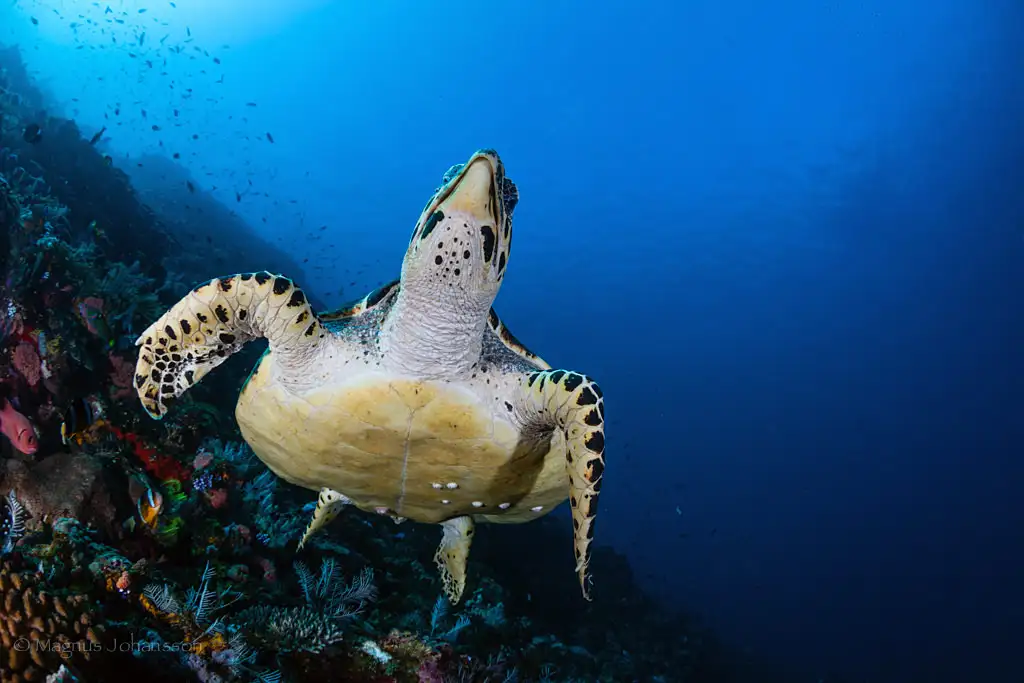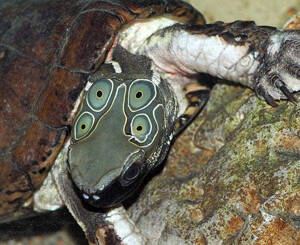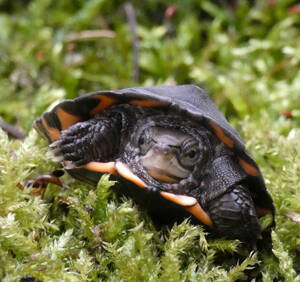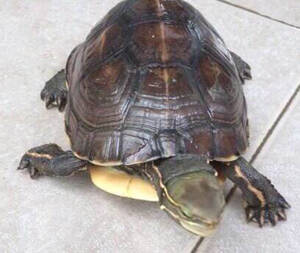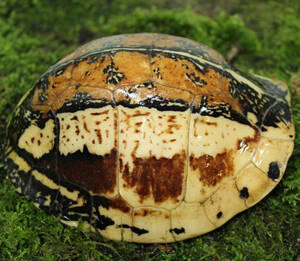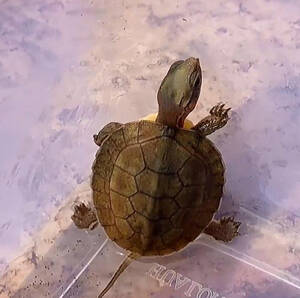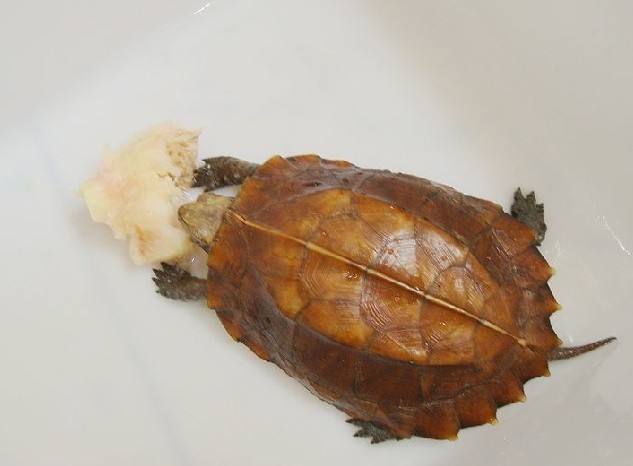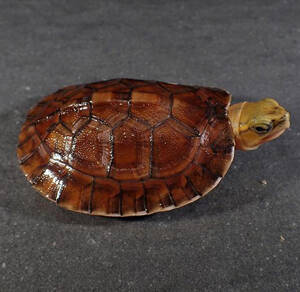Sacalia bealei
IUCN
LCBasic Information
Scientific classification
- name:Sacalia bealei
- Scientific Name:Sacalia bealei,Beal's eyed turtle,Spotted turtle
- Outline:Testudines
- Family:Testudinata Testudinidae O.Terrapin
Vital signs
- length:
- Weight:
- lifetime:50years
Feature
There is usually a pair of eye-shaped spots on the back of the head, with 1-3 black spots in the center.
Distribution and Habitat
It is endemic to China and is distributed in Guangdong, Guangxi, Fujian, Hainan, Anhui, Guizhou, Jiangxi, and Hong Kong. It usually lives in low mountains, hills, mountain streams, and areas with clear water.
Appearance
The top of the head is smooth and pointed. The carapace is flat and oval, with a distinct central ridge and no serrations on the front and back edges. The plastron is flat, with a flat front end and a notch at the back end. The limbs are flat and scaly, and the tail is thin and short. The top of the head is brown, covered with black insect-like spots, with 1-2 pairs of horseshoe-shaped eye spots on the back of the head, and several yellow vertical stripes on the neck. The carapace is brown-red or brown, densely covered with small black spots or stripes. The plastron is light yellow, with scattered black spots or stripes.
Details
The spotted turtle is aquatic, mainly living in streams with slow and clear water flow and gravel bottom in hilly areas below 400 meters above sea level. It is timid and will retract its head, tail and limbs into its shell or run around aimlessly when disturbed. It likes to bask in the sun, and the suitable water temperature is 24-26℃, and the pH of the water is neutral to slightly acidic. The activity decreases at 8-10℃, and it gradually enters hibernation as the water temperature drops. It usually hibernates in caves beside mountain streams or ditches. It is omnivorous, and its main food is small fish, shrimp, snails, clams, snails and worms. It feeds on pork, frogs, fish, shrimp, rice, fruits, etc. under artificial breeding conditions.
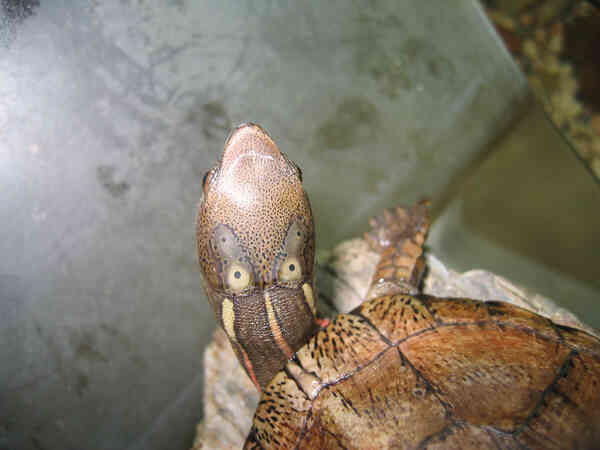
Parent turtles usually mate at the end of April, and the egg-laying period is from May to August. They lay eggs in 3-4 batches each year, with 3-6 eggs in each batch. Before laying eggs, the female turtle crawls to the shore, digs holes in soft places with its hind legs, lays eggs in the holes, and then digs soil to cover the eggs, flattens the soil with its plastron, leaves a small hole on it, and then leaves. According to this habit, a sand tray 40-50 cm long and 20-30 cm wide is set up under the turtle pond and fence, with 4-6 cm of fine sand inside and a few broad-leaved plants covered, allowing them to lay eggs in the sand tray. Collect the eggs and place them in an incubation tray 8-10 cm deep, 40-50 cm wide, and 60-70 cm long, covered with 2-3 cm of fine sand, keep the sand temperature at 25-30℃, and sprinkle water twice a day to keep it mixed. Under normal circumstances, baby turtles can be hatched in 75 days.
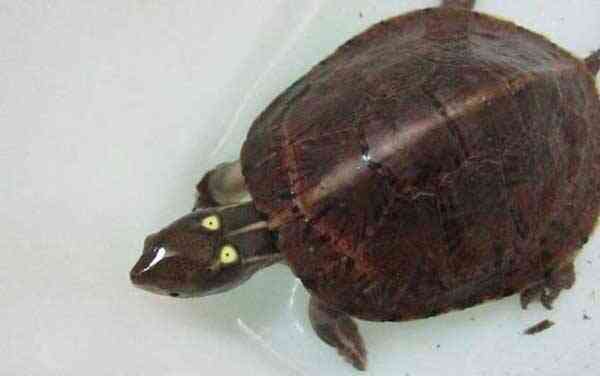
Due to the destruction and reduction of its habitat and breeding environment, the difficulty of natural proliferation, and its high economic value, it has been captured repeatedly, and its wild resources have been severely damaged and are in an endangered state.
Listed in the second level of the "List of National Key Protected Wildlife in China". (Wild populations only)

